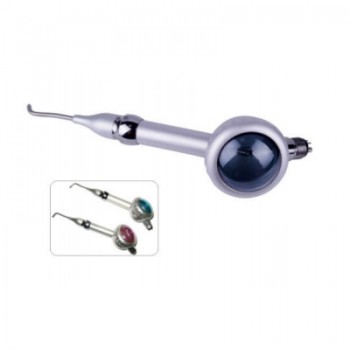Use of dental air polishers decreased as the clinician’s age and experience increased. Curricula in many dental hygiene schools do not include clinical instruction in the use of this polishing device due to inadequate numbers of units and difficulty in moving units between clinic stations. Inadequate or insufficient knowledge and experience, therefore, appears to be a major factor in the underutilization of the air polisher. In an attempt to provide a suitable knowledge base for practicing dental hygienists, the primary purpose of this article is to provide a comprehensive summary and critique of the research on all aspects of air polishing. In addition, a suggested technique, common concerns, and possible solutions will be discussed.
Discussions are based on a review of the relevant literature on air polishing. Tables organize the data into categories to facilitate access of needed information. Because of the various research designs employed and the number of variables that must be controlled, comparative analyses of the studies are difficult. However, where possible, analyses of the validity and reliability of the studies are provided. It should be remembered that while laboratory (in vitro) investigations are useful, the most definitive conclusions must be obtained through clinical (in vivo) studies. Case reports or opinion articles have limited applications. Therefore, interpretation and application of research results must be done with caution.
Air polishing has been compared to scaling and rubber-cup polishing for efficiency and effectiveness of stain and plaque removal. The literature overwhelmingly supports the use of the air polisher as an efficient and effective means of removing extrinsic stain and plaque from tooth surfaces. Air polishing requires less time than traditional polishing methods and removes stain three times as fast as scaling with comers. In addition, less fatigue to the operator has been mentioned as an important benefit of air polishing.
Most investigators agree that intact enamel surfaces are not damaged when stain removal is accomplished with an air polisher. Even after exposure to enamel for the equivalent of a 15-year recall program, surfaces were not altered.
in one in-vitro study, air polishing was shown to remove less root structure than a curet in simulated three-month recalls for three years. Woodall agrees that the air polisher may be preferable to curets in this situation. Since less root structure is removed, decreased root-surface sensitivity also may be a benefit.
Clinical studies to evaluate soft tissue usually provide generalizable conclusions. Gingival bleeding and abrasion are the most common effects of air polishing. These effects are temporary; healing occurs quickly and effects are not clinically significant. No complications were seen with healing at extraction sites following air polishing of teeth prior to extraction. To avoid tissue trauma, the manufacturer recommends pointing the tip of the air polisher at the facial, lingual, or occlusal surfaces, thus avoiding the gingival margins.
Patients also have noticed a salty taste with air polishing, but this was not objectionable. Covering the tongue with moist gauze may prevent irritation and excessive salty taste, as will rinsing with water, mouthwash, or a mint-flavored powder.
